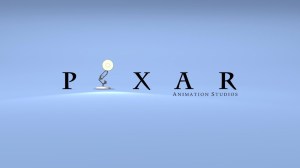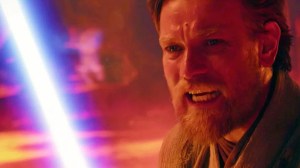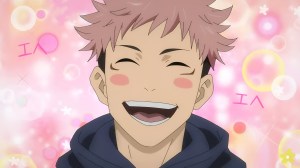
Videos by ComicBook.com
That being said, I hear that the Wingless Wizard has put together a new team of SPOILERS…
The Good:
Let’s start with the art. Perhaps unfairly, I reacted rather negatively in my last review toward the art of Marc Laming who in the last issue and this current one has been taking over art duties from regular series penciller Leonard Kirk. While my preference is still for Kirk’s work, Laming is going great and enjoyable work. He draws a pretty excellent Ben Grimm and Sharon Ventura, composition is good, faces are expressive, and he complements the story very well.
Laming’s Ben Grimm in particular is worthy of praise as he maintains a great face shape for him and makes him quite expressive. This is another matter of personal preference but I quite appreciate that he is using a fairly traditional look and more normal stature for this character. In the interest of honest feedback, I think my most substantive constructive criticisms of Laming’s work would be that at times figures, while anatomically unassailable, can be a touch stiff; while the angles from which he is depicting a scene and his panel composition could be a bit more dynamic. Further kudos to Laming for depicting the FF’s seldom-referenced Pogo Plane in the S.H.I.E.L.D. hangar that Sue infiltrates.
I would like to also compliment inker Scott Hanna. He does excellent work as well on the pages that he handles. It’s quite interesting actually to see his inking work against Laming’s own who tackles two pages of this particular issue. As good as Laming’s inking is, there’s something I appreciate about Hanna lending a hand. Laming’s linework tends to be a bit harsher or sharper in a way that appeals slightly less to me personally than Hanna’s softer technique. Hanna’s contribution also helps the art to mesh a bit more seamlessly with that of the rest of the series.
Colorist Jesus Aburtov continues to do stellar work as well. His choice of colors helps to delineate between different setting and time periods, and he does an excellent job of bringing the artwork to life.
Writer James Robinson continues to impress issue after issue. I continue to appreciate his attention to past Fantastic Four continuity and the fact that he is drawing more of the FF’s extended secondary cast into the series. In this issue, Johnny Storm gets a visit from Wyatt Wingfoot making this one of the very few times in years that he has appeared in a Fantastic Four-related comic book. Also, continuing to explore Sharon “She-Thing” Ventura’s place in this story and making reference to the Unlimited Class Wrestling Federation puts a smile on my face. The fact that he even thought to bring in members of Salem’s Seven as villains is a point in his favor for me.
Robinson is obviously quite a talented writer and juggles several continuing plot threads quite well. The mystery of the FF’s fall from grace and the person or persons behind it continues to deepen in ways that only increase my excitement for future issues. Robinson somehow manages to advance the overall narrative, arcs for the entire FF team, and throw in some action in each issue with admirable skill. As I’ve said before, this series feels like classic FF for the first time in a long time and I’m very happy about that.
Since I’ve already warned you about spoilers, I feel safe in saying that the final page reveal that the Scarlet Witch will somehow, even if only briefly, be involved in the proceedings is intriguing as she has never really been a significant part of FF history that I can recall. The only real connection that I’m aware she has to the team is that she was partially trained by witch Agatha Harkness who was also the nanny of Reed and Sue Richard’s son Franklin. Now that I think of it, this makes it even more appropriate that the Scarlet Witch arrives to assist Reed in dealing with the Wizard’s newest incarnation of the Frightful Four as it includes several members of Salem’s Seven who also happen to be the grandchildren of Agatha Harkness.
The Bad:
There isn’t much to say here. In terms of the story and writing, there isn’t anything I can really put my finger on as problematic. In terms of the art, I have only the most minor of nitpicky quibbles. Sharon Ventura’s face in the panel where she says, “I ended up here,” looks oddly shaped compared to the rest of the issue. Also, there are a number of panels where Ben and Sharon are missing pupils to their eyes in an example of what some snarky denizens of the internet call “Youngblood’s Disease.”
The Questionable:
Where we talk about things that are neither good nor necessarily bad, but are at least a little head-scratching.
I know that last issue I made much of Sharon Ventura’s appearance as a “lumpy” version of the She-Thing not fitting into continuity or making sense with the established nature of a transformation into a Thing-like being. As I was confused, I reached out to the creative team over social media. Far from the “typo” of sorts that I thought this was, it appears that her appearance was deliberately chosen. In fact, the artist, Marc Laming, originally drew her as smooth and craggy but was told by editorial to instead depict her as lumpy. After I questioned this further, the writer chimed in that he made the call. It seems as though Robinson has a reason for her current appearance and this is not simply sloppy attention to continuity.
Given that Robinson has hitherto been very good about making intelligent use of FF history, it seems that I should have given him more credit. Still, I have to wonder why Ben Grimm didn’t make mention of Sharon’s appearance since it would constitute an alteration from the state that she was in when he was last aware of her. This is probably another minor quibble but one that I thought still worth mentioning. I mean, if an alteration to appearance even as minor as Reed Richards showing up blonde happened, I would expect Ben to at least comment on it. Also, without any reference at all to it, how is a reader aware of Sharon’s history and most recent appearances supposed to know that her altered complexion is intentional and not be taken out of the story slightly? It isn’t exactly unheard of for creative teams to simply disregard or misremember past continuity, or for character models to sometimes shift with little to no explanation.
Conclusion:
This series remains a definite must-read and if you’re not following by now then I don’t know what’s keeping you. My compliments to the entire creative.









